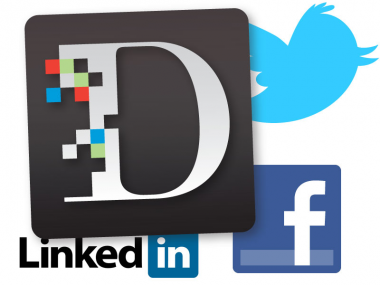
Digital publishing is no longer about newsletter subscriptions. Social media channels are capable of driving more traffic to media sites than search and direct navigation combined (sometimes).
Two years ago, when I was with Econsultancy, we learned 10 percent of traffic was coming from Twitter alone. Ten percent may not sounds like an enormous number, but it’s not peanuts, either. Moreover, it was traffic that hadn’t existed a scant two years earlier, before Twitter launched. With Facebook on the scene and Google+ billing itself as a “content discovery” tool, social media simply cannot be ignored by any publisher hoping to attract eyeballs.
It’s not as if publishers aren’t aware of this. Many, if not most, already have some sort of prerequisite presence on Facebook and Twitter (at a bare minimum). Today, AllThingsD raised the bar for all publishers by launching a social media subscribe page.
It’s about segmentation. User preference. Social media. The page makes it easy for subscribers to follow the topics they wish to follow in their channel of choice. The page features 12 topics to follow on Twitter (news, mobile, media, etc.); coverage of five specific tech companies (OK, here’s a hint, they start with “G,” “M,” “A” “F” and “T”); and 10 different writer feeds (are you listening, PR professionals?).
Scroll down the page and take your choice of 20 (20!) RSS feeds, an iPhone app, e-readers and widgets. There’s even a newsletter option, which in the context of the rest of the page starts to look terribly retro.
While this plethora of new follow, like and subscribe options give AllThingsD more to measure, at the end of the day these social metrics won’t be more complex or difficult to analyze than email metrics in terms of number of subscribers/followers, clickthroughs and yes, even conversions.
Publishers need to take a look at AllThingsD’s social subscription page now and seriously consider using it as a template for their subscription options. Email newsletters are far from dead, but there are many other channels in which users find, discover, consume and share content.
Be there for them.
